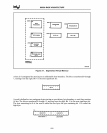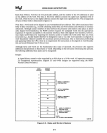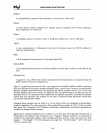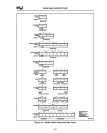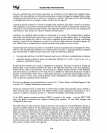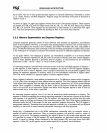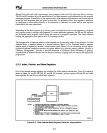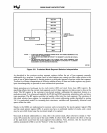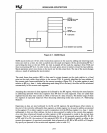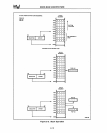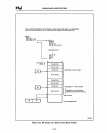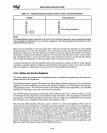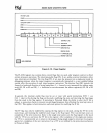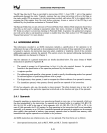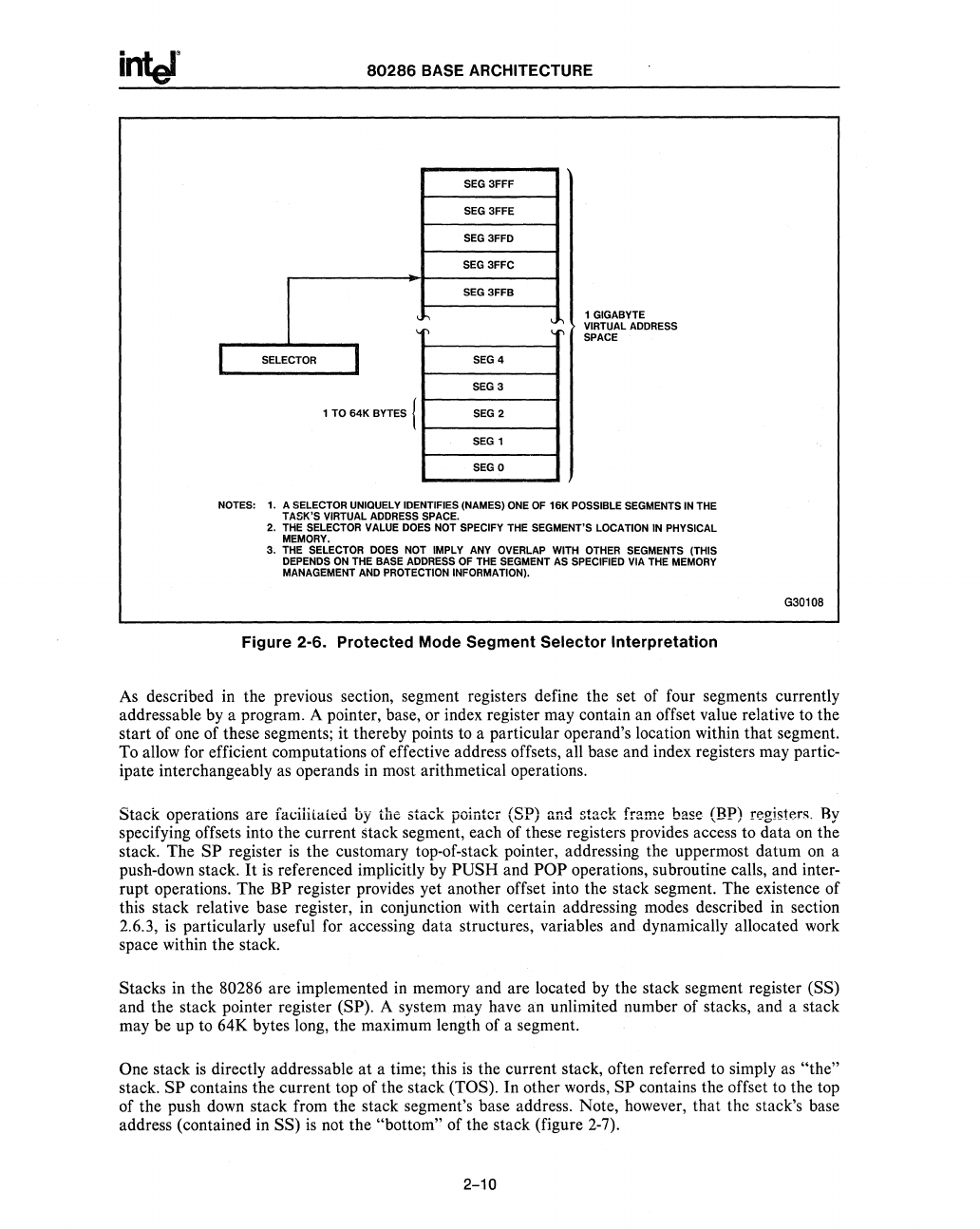
inl:el®
80286
BASE
ARCHITECTURE
SEG 3FFF
SEG 3FFE
SEG
3FFD
SEG
3FFC
SEG
3FFB
,
1 GIGABYTE
VIRTUAL ADDRESS
SPACE
I
SELECTOR
I
SEG 4
SEG 3
1
TO
64K
BYTES {
SEG 2
SEG 1
SEG
0
NOTES:
1. A SELECTOR UNIQUELY IDENTIFIES (NAMES) ONE
OF
16K
POSSIBLE SEGMENTS
IN
THE
TASK'S
VIRTUAL ADDRESS SPACE.
2. THE SELECTOR VALUE DOES NOT SPECIFY THE SEGMENT'S LOCATION
IN
PHYSICAL
MEMORY.
3. THE SELECTOR DOES NOT IMPLY ANY OVERLAP WITH OTHER SEGMENTS (THIS
DEPENDS
ON
THE BASE ADDRESS
OF
THE SEGMENT AS SPECIFIED VIA THE MEMORY
MANAGEMENT AND PROTECTION INFORMATION).
Figure 2-6. Protected Mode Segment Selector Interpretation
G3010B
As described in the previous section, segment registers define the set of four segments currently
addressable
by
a program. A pointer, base, or index register may contain an offset value relative to the
start of one of these segments; it thereby points
to
a particular operand's location within that segment.
To allow for efficient computations of effective address offsets, all base and index registers may
partic-
ipate interchangeably
as
operands in most arithmetical operations.
Stack operations
are
facililattd
by
the
stack pointer (SP)
~nd
stack frame base (BP)
register~_
By
specifying offsets into the current stack segment, each of these registers provides access to data
on
the
stack. The
SP
register
is
the customary top-of-stack pointer, addressing the uppermost datum
on
a
push-down stack.
It
is
referenced implicitly by
PUSH
and POP operations, subroutine calls, and inter-
rupt operations. The BP register provides yet another offset into the stack segment. The existence of
this stack relative base register, in conjunction with certain addressing modes described in section
2.6.3,
is
particularly useful for accessing data structures, variables and dynamically allocated work
space within the stack.
Stacks in the 80286 are implemented in memory and are located by the stack segment register (SS)
and the stack pointer register
(SP). A system may have an unlimited number of stacks, and a stack
may be up to 64K bytes long, the maximum length of a segment.
One stack
is
directly addressable at a time; this
is
the current stack, often referred to simply
as
"the"
stack.
SP
contains the current top of the stack (TOS). In other words,
SP
contains the offset
to
the top
of the push down stack from the stack segment's base address. Note, however, that the stack's base
address (contained in SS)
is
not the "bottom" of the stack (figure 2-7).
2-10



